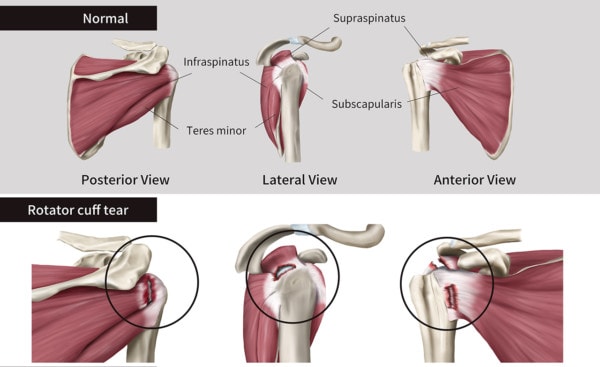Does a Partial Rotator Cuff Tear Get Bigger Over Time?
If you have a small rotator cuff tear, will it get bigger over time? This is a critical issue as we have many patients who put off getting their shoulder treated for years. So what is their risk? Let’s dig in.
The Shoulder Rotator Cuff
Your shoulder has four muscles that stabilize the joint and move it. The tendons of these muscles can become torn either through trauma or wear and tear. When that happens, it’s called a rotator cuff tear. These can be partial, which means that the tear isn’t completely through the tendon.

Chu KyungMin/Shutterstock
If you have a partial tear, will it get bigger? Or does it just get better on its own? If it does get bigger, how long does it take before it completely ruptures?
A New Research Analysis
A meta-analysis is the king of studies because it takes the data from many studies and then aggregates it to perform another analysis. This is what the authors of the new research did by taking four studies that looked at how much rotator cuff tears grew over time (1). What did they find?
The graph above is from the new study. They plotted the different study results over time as a percentage increase in the tear versus time. The rotator cuff tears got bigger at about 5% over 10 months and by 20 months they were approximately 10% bigger. It took about 5 years to get 20% bigger.
Why Should You Care?
We can treat rotator tears with precise ultrasound-guided injections of orthobiologics. If the tears are smaller, platelet-rich plasma (PRP) is a good fit. If they’re bigger, then bone marrow concentrate is a better fit. If they’re completely torn and retracted (pulled back like a rubber band), they need surgery and injections won’t help.
Let’s say you have a 25% tear of the rotator cuff (1/4 torn). The good news is that it would usually take years to get to 50%, so you have some time to get that treated with PRP. However, if you’re already at 50%, then you want to get that shoulder treated ASAP. What does this procedure look like? See my video below:
Having said that, getting something treated earlier is always better than later. So don’t play around too much with these numbers. In fact, my left shoulder has a small tear and this new study just encouraged me to want to get it treated next week.
The upshot? Small shoulder rotator cuff tears can reliably get bigger over time so get yours treated sooner rather than later. As I always say, small problems, small solutions, big problems, bigger procedures.
__________________________________
(1) Tsuchiya S, Davison EM, Rashid MS, Bois AJ, LeBlanc J, More KD, Lo IKY. Determining the rate of full-thickness progression in partial-thickness rotator cuff tears: a systematic review. J Shoulder Elbow Surg. 2021 Feb;30(2):449-455. doi: 10.1016/j.jse.2020.08.022. Epub 2020 Sep 10. PMID: 32920110.

If you have questions or comments about this blog post, please email us at [email protected]
NOTE: This blog post provides general information to help the reader better understand regenerative medicine, musculoskeletal health, and related subjects. All content provided in this blog, website, or any linked materials, including text, graphics, images, patient profiles, outcomes, and information, are not intended and should not be considered or used as a substitute for medical advice, diagnosis, or treatment. Please always consult with a professional and certified healthcare provider to discuss if a treatment is right for you.

